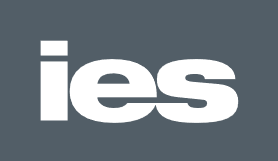Aged equipment gradually becomes more obsolete over time.
OEMs start removing older equipment from their stocks to make way for the new. They stop manufacturing and selling spare parts for repairs. And they cease support for legacy tools.
So, what do you do when the legacy equipment you use in your everyday operations starts to fail?
Parts harvesting is an increasingly popular option for businesses in this situation.
In this article, we’ll explore what part harvesting is, how we can help, and take you through a recent project we undertook so you can understand exactly how it works and what it involves.
What is Part Harvesting?

Part harvesting involves buying a secondhand piece of equipment that’s identical (or, at least, similar enough) to the one you need to support.
You then strip that tool for the parts you need (for example, power suppliers, motors, controllers and robots), and use those parts to support your existing equipment.
This can prove more cost-effective and efficient than acquiring a brand-new, piece of equipment.
The main drawback is, part harvesting is a particularly challenging task to undertake.
You need deep expertise in de-installing, disassembling and transporting large and delicate modules, or you risk damaging them. That’s because, if the part has not already been removed, acquiring it could involve travel to the equipment owner’s factory to perform de-installation and move-out, and warehouse space at your site to store and strip the equipment.
We at IES have worked with numerous customers over the past few years to support them with part harvesting.
Our complete service means that all our customer needs to do is find and purchase the equipment they want, let the current owner know we’re coming, and we do the rest.
So you can understand how it all works, let us tell you about a recent project we undertook for one of our Europe-based clients.
Harvesting an Axcelis Optima Implanter
.jpg?width=700&height=467&name=Parts%20Harvesting%20(3).jpg)
Our story starts in March 2024.
We were contacted by a European client planning to purchase an Axcelis Optima implanter for parts, and they needed our support harvesting the parts they needed.
After a discussion to inform them how our service worked and find out what they wanted out of it, we agreed that we’d travel to the current owner’s fab and disassemble, move out and transport the equipment to our factory in Bristol.
We’d then strip the equipment for the semiconductor parts our client wanted, scrap the rest, and finally crate and deliver the parts to our client’s facility.
Here’s how we did that.
It All Comes Down to Planning
.jpg?width=700&height=467&name=Parts%20Harvesting%20(2).jpg)
Every part harvesting project hinges on careful and meticulous planning. Otherwise, things can go wrong very quickly.
The most challenging part of the planning process is often arranging with the equipment’s current owner a time when we can go to their site and undertake the project. Dismantling and moving out a large, tool like an ion implanter can take around a week to complete, after all. And the owner might not be happy to allow that level of disruption to their site and operation.
After talks, we were able to agree on a five-day timeframe with the equipment owner. This would be tight. But possible.
After performing a site survey, we then meticulously planned:
- Exactly how we’d dismantle the tool
- How we’d move the tool out (for example, we needed to have lorries waiting outside as we couldn’t block entrances with large modules)
- How we’d transport the tool
- Customs considerations (we were moving the tool to IES, which would need customs clearance)
- How we’d offload and strip the tool at our site in Bristol and the type of labour we’d need
- Finally, how we’d pack and send the desired parts to our customer in Europe
Once we had it all planned, we promptly put our plan into action.
An Expertly Executed Move-Out
.jpg?width=700&height=467&name=Parts%20Harvesting%20(6).jpg)
De-installing and taking apart an ion implanter semiconductor tool (let alone a legacy tool) is a challenging process.
You need to know in exactly which order to disassemble different modules and components, or you risk the safety of your team or damaging the tool.
We started by taking off the enclosure, which consisted of the panels, doors and roof. The doors alone are very heavy, as they can be enforced with lead, so we leveraged the support of local installers and riggers to do the heavy lifting.
We then disconnected the cables and tied them up neatly so they wouldn’t cause any hazards, and started splitting the tool in the correct order. We could then start moving modules and components out one at a time.
Ion implanter modules, however, aren’t designed to be lifted. And their delicate frames can easily bend under their significant weight. That’s why, in projects such as this one, we provide shipping kits to help us lift them safely.
Shipping kits consist of pieces of metal that we can bolt onto the bottom of a given module during to enable safe lifting. This ensures that the weight of the module is distributed evenly across the metal support, rather than on any part of the module’s frame, and enables us to lift modules safely.
Once the shipping kit had been fitted, we were able to safely move modules out of the fab and load them onto our lorry.
Delivering Delicate Components
.jpg?width=700&height=467&name=Parts%20Harvesting%20(4).jpg)
Thanks to our extensive experience and expertise in moving and handling delicate capital equipment, we can save our customers time and money by loading modules and components directly onto our lorries, rather than packing them into crates first.
For this project, we started by strapping each module down and blocking them in using timber bracing and supports, so a module didn’t sit directly on the frame of the lorry. That way, everything was held perfectly and safely in place for its journey across borders to our facility in Bristol.
We also used a number of plastic transport boxes for the small parts that we didn’t want rattling around throughout the journey.
Once our lorry arrived at our Bristol facility, the IES team began offloading the contents into our warehouse.
We then stripped the modules and components for the parts the customer had requested (for example, power supplies, controllers, motors, robots and cabling), and we scrapped the rest on their behalf.
To finish, we carefully wrapped and packed the selected parts into 3–4 crates, with packing lists attached (this enables the client to easily locate a part when required to support their existing equipment), to be shipped directly to the customer’s European site.
The customer can now use those parts to support their tool.
So, while the parts harvesting process required decades of experience and expertise on our end, all our client needed to do was point us in the direction of the equipment they wanted, and let us handle the rest. Easy.
A Parts Harvesting Service You Can Rely On
Looking to undertake a parts harvesting project but just don’t know where to start?
Get in touch via the link below and we’ll walk you through the entire process, what it involves and how we can help.




